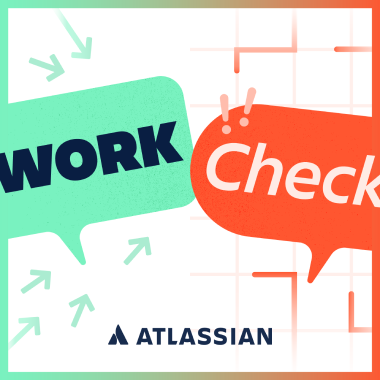How to handle team conflict as a first-time manager
Three scenarios specific to new managers, plus what to do when all else fails.
Picture this: you’re managing a team for the first time and two of your team members can’t seem to get along. Things haven’t devolved to the point of personal attacks or shouting matches, but there’ve been some heated exchanges in meetings that got right up to the line. The tension, the passive-aggressive vibes…it’s dragging the whole team down.
To make matters even more interesting, you’ve just been promoted from within, and the people involved in the conflict used to be your peers. You had a great relationship with them before as teammates. Now, you risk alienating one (or both) of them as you deal with this.
This is one of the more nightmarish scenarios a new manager might encounter (and thankfully, not a very common one). But it brings up a fundamental question: How do you shape-shift from player to referee?
The way you manage conflict on your team matters to the people involved, to your relationship and ability to effectively manage them, and to the team’s performance. There are billions of pixels’ worth of advice on the internet for dealing with team conflict, which every manager should avail themselves of. Today, however, we’re going to cover a few nuances specific to first-time leaders.
When one or more parties used to be your peer
This is the one that keeps people awake at night, so let’s get straight to it. It can feel awkward enough simply managing people you used to work with side-by-side, but conflict between them takes it to another level. Go ahead and acknowledge the awkwardness of this new dynamic. Let them know you intend to treat them equally and that your focus is on the team’s success as a whole. This is especially important if you happen to have a closer relationship with one of them.
You might feel pressure to bring an opinion to the situation from the get-go, but here’s a secret: you don’t have to! “Starting from a place of curiosity helps diffuse the tension,” says Mark Cruth, one of Atlassian’s Modern Work Coaches. “Be up front about the fact that you’re not coming into this with a pre-determined answer. At the start, you’re there to listen and learn from both parties.” Keep that curious mindset and encourage the people involved to adopt it too as you dig into the issue and work toward a solution.
Empathy is the key to successful conflict resolution, and you’ve got a special advantage here: you already know the people involved. Use that. For example, if you know that one person tends to get defensive easily, it’ll be important to frame questions carefully to avoid making it seem like you’re assigning blame. Or, if you know that one person is looking to move up the professional ladder, reminding them that this situation is a proving ground of sorts may help them stay calm, humble, and gracious even if things get heated.
When the conflict started before you joined the team
The most important thing you can do in this situation is address the issue before it gets out of control. “It’s tempting for managers especially to tell themselves it’ll blow over,” Mark cautions, “but that almost always turns out to be wishful thinking.” The longer the problem festers, the harder it will be to untangle.
Here too, start by listening to both parties with a curious, no-blame mindset. Consider talking to them separately so the conversation doesn’t devolve into an argument. Each party will be very aware that this is a fresh start, in a sense. It’s their one chance to shape the narrative in a way that favors themselves. As such, it’s a high-stakes conversation – the type people tend to walk into with knives out and shields up. You’ll get more candid and complete information by meeting with them one-on-one.
You can also speak with other people on the team and close collaborators to get even more of a 360-degree view. Just be careful to approach people who are already aware of the conflict. You wouldn’t want to inadvertently contribute to office gossip.
Try the Play
Joining a new team is a great opportunity to run the Working Agreements Play. There’s time for discussion where the team can talk about how they want to resolve conflicts that come up.
Remember that part of being a good manager is knowing when to ask for help. Don’t be afraid to reach out to your HR team for some coaching. HR professionals are trained and experienced in conflict resolution and can help a new leader learn how to deal with them. (Really, as a new manager, it’s a good idea to reach out for this kind of training even if your team is humming along harmoniously.) Try getting tips on your conflict resolution techniques before formally escalating the situation to HR or upper management.
When the conflict involves another team
Conflicts that involve someone from another team can be extra tricky in that you’ll need to coordinate with the other team’s leader, whose priorities and perspective might differ from yours. Once you and your direct report have discussed the situation, reach out to the other manager. Ask to meet and compare notes so you both have more context – a live discussion is preferable to email as it will help you build rapport, too.
You might also consider using the Working Agreements play if conflict seems to come up frequently between your two teams. Chances are, the conflicts stem from differences in priorities or lack of a shared understanding around goals. You can craft agreements that help avoid conflicts in the first place, as well as agreements that speak to how you’ll handle any future conflicts.
“Being intentional about how you address conflict across teams goes a long way toward crafting a resolution,” Cruth notes. Make it clear that you’re not there to play politics, just to get both teams back on track.
You might also look for shared goals that could be a launchpad for a resolution. For example, let’s say there’s a disagreement between a developer on your team and the IT team’s security specialist over technical design. Let’s also say there’s a department-wide goal of reducing incidents by 20%. That goal might determine the winning approach. Or, you might ask the two engineers to put their heads together and co-design an approach that satisfies both parties’ concerns and helps reduce incidents.
No matter what resolution you reach, be sure to get buy-in from everyone directly involved in the conflict and their manager(s). If the plan includes accountability measures (e.g., monthly check-ins), make sure that’s understood by all, too.
When all else fails
If you’re just not getting any closer to a resolution, and you’ve already received some coaching from HR, it may be time to escalate the issue. Many companies have escalation paths mapped out (ask your HR contact); if so, follow that. If not, start with your manager. Presumably, you’ve been keeping them apprised and/or have asked for guidance on the situation, so they should have enough context to judge whether it’s an issue for HR or for upper managers to sort out.
For the people at the heart of the dispute, it’ll be pretty alarming to learn that the conflict has been escalated. But you can avoid putting people on the defensive – and help destigmatize the escalation process in general – by giving them a heads-up in advance. As our Clean Escalations Play says, escalations are simply a means of ensuring you’re optimizing globally rather than locally. And never use them as a weapon. For example, escalating the issue hastily in the middle of performance review season would be perceived as punitive and might even give the impression you’re trying to push the people involved off your team.
When it’s actually not that complicated
Most conflicts you have to referee probably won’t involve any of these complicating factors. So a few across-the-board tips feel appropriate, seeing are you’re new to the game.
- Using open-ended questions is a powerful way to get a comprehensive understanding of the conflict. It also helps you avoid coming off as if you’re making accusations. Little tweaks in the language you use can help. Instead of starting questions with “why,” use “what” or “how” instead. “Why did you do that?” feels sharply judgmental, whereas “What made that seem like the right decision?” feels like an invitation to share their perspective. The more you can avoid putting people on the defensive, the more room there’ll be for open, productive dialogue. You can find a great list of open-ended questions here.
- When you focus on moving forward together instead of assigning blame, you turn the conflict into a learning opportunity. (Blaming and punishment can also serve as lessons, but think about whether that’s really the vibe you want to cultivate on your team.) A blame-free culture, where failures are regarded as team failures or system-level failures, breeds the all-important psychological safety that encourages your team members to put innovative ideas forward and take calculated risks.
- Stop conflict before it starts by developing working agreements with your team that address common root causes. Ask yourselves questions like “What’s our expectation about responding to messages outside of working hours?” and “How do we decide who works on which project” and “Is it cool to Slack someone during their focus block?” You can also come to agreements about how you’ll navigate any future conflicts that might arise.
Finally, remember that conflict happens even on the highest-performing, most cohesive teams. Don’t beat yourself up that it’s happening on your watch. “What matters most,” says Cruth, “is being intentional about how you want to resolve conflict by talking about it as a team.” Having an agreed-upon approach gives you a North Star to guide you through turbulent times.










































